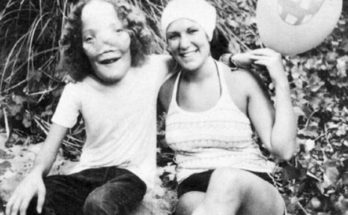Quick Facts
| Net Worth | Not Known |
| Salary | Not Known |
| Height | Not Known |
| Date of Birth | Not Known |
| Profession | Celebrities |
Ever wondered what cleaning would be like without vacuum cleaners, well, no need to wonder because British inventor and civil engineer, Hubert Cecil Booth eliminated that possibility.
Hubert Cecil Booth is an engineer popularly known for the creation of the first powered vacuum cleaner. The British inventor changed the course of cleaning forever with his “Puffing Billy”, as he nicknamed it. This invention had the basic components that are found in all modern vacuum cleaners today.
Prior to his invention in Europe, carpets were cleaned by taking them outside houses and vigorously beating them to remove debris, once a year. This rigorous process became a thing of the past, as the first vacuum cleaners were able to clean carpets at the comfort of the homeowners; little wonder its popularity and success around Europe and beyond.
Hubert Cecil Booth – Biography
Hubert was born on the 4th of July 1871, in Gloucester to Abraham Cecil Booth, a lumber merchant. The identity of his mother is not known. Hubert had four siblings, all male. While growing up, Hubert was said to have lived not only with his family members but also servants and visitors.
He began his education at Gloucester College and Gloucester Country School and in 1889 he entered the Central Technical College, City and Guild, London, where he completed a three-year course in civil and mechanical engineering. He married the daughter of Francis Tring Pearce, director of the Priday Metford and Co, Charlotte Mary in 1903. The couple had two children, Francis and Edward.
The British engineer kick-started his career as a draughtsman at Maudslay Sons and Field. At Maudslays, he designed engines for Royal Navy battleships. Earlier in his career, he was involved in designing and executing massive engines used to create stunning attractions.
One of his widely known contraptions is the Ferris wheel used in amusement parks. His walk to fame began when he was inspired at the Empire Music Hall in 1901, where an inventor demonstrated a new device that could blow at high pressure to remove dust. While Booth was fascinated, he wondered why this device blew the dust away instead of sucking it in and so he began the journey of reversing the process.
Booth interest was further piqued by a mechanical aspirator at St. Pancras rail station which was used to clean rail cars. Although it worked like the previous invention Booth encountered, these inventions prompted Booth to seek a more efficient way to clean dust.
To know if his idea of suction of dust was realizable, Booth made a little experiment by placing a handkerchief on a velvet seat and sucked on it. He inhaled enough dust to make him cough and the underside of the handkerchief was lined with a coating of dust; this showed that his idea was worth the chase.
In 1901, Booth invented the first vacuum cleaner and patented it in that same year. The device consists of a suction pump, attached to a hollow implement. It also included a flexible tube open at one end and connects to an impurity collector that served as a filter. The Puffing Billy had a gasoline-powered generator which was large and cumbersome and had to be transported to each house using a horse-drawn cart. Attached to the device was a hose measured about 8 feet passed through the window into the buildings for cleaning while the other parts of the machine stayed outside.
In 1906, when electricity became popular, Booth was enabled to develop a more portable version of his vacuum cleaning. He also established the British Vacuum Cleaner Company to market his products. Not long after, the word about Booth’s invention reached the English palace and the machine was used to clean the carpet running down the center aisle of the Westminster Abbey.
News about Booth’s invention spread far and wide to various countries and was an inspiration and a reference point to many other inventors who developed modified versions of the Puffing Billy and is the reason we have our contemporary vacuum cleaners.
Facts You Should Know About Hubert Cecil Booth
Aside from the construction of the Ferris wheel, Hubert was involved in designing and constructing of “Great Wheels” varying from 270 feet to as high as 300 feet in diameter. These wheels were used in amusement parks in London, Vienna, and Paris.
In 1897, he was elected an Associate member and was made a bona fide Member in 1910. He was also a Fellow of the City and Guilds of London Institute.
In 1900, Hubert commenced a consulting practice in London.
After his invention of the vacuum cleaner, Hubert handled the design and construction of steel railway, man-over, under and suspension bridges, factory plants and other structural steelwork in India and parts of Africa.
During World War I, Hubert delivered and installed vacuum cleaners in high-explosive factories and is notably remembered for the application of his invention at the Crystal Palace at Sydenham for the Admiralty during a fever epidemic. After the application, the fever subsided almost immediately.
He turned down an offer to be named a Knight and on the 14th of January 1955, Booth gave up the ghost in the city of Croydon, London at the age of 83.
Top 3 Richest Celebrities
Also Read: Top 10 Richest People in the world with full biography and details.




